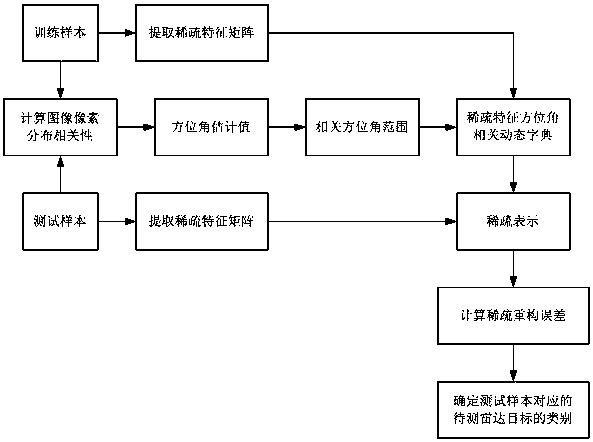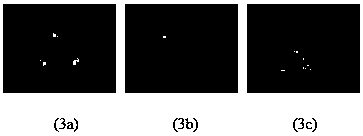SAR Target Recognition Method Based on Azimuth Correlation Dynamic Dictionary Sparse Representation
A dynamic dictionary and object recognition technology, applied in character and pattern recognition, instruments, calculations, etc., can solve the problems of insufficient recognition processing efficiency, target recognition accuracy, and complicated operation process, so as to improve recognition processing efficiency and reduce calculation amount , Solve the complicated effect of sparse coding and sparse reconstruction operation process
- Summary
- Abstract
- Description
- Claims
- Application Information
AI Technical Summary
Problems solved by technology
Method used
Image
Examples
Embodiment
[0078] This embodiment uses the MSTAR database to do the experiment, which is the measured data obtained by the SAR system of the X-band of the San Diego National Laboratory in the United States. It has a resolution of 0.3m × 0.3m, and the pixel density of each SAR image is 128 Rows × 128 columns, collected at azimuth angles from 0° to 360°. Use BMP2 (infantry tank), BTR70 (armored personnel carrier), T72 (T-72 type main station tank) in the MSTAR database to carry out experiments in this embodiment, three different types of radar targets of BMP2, BTR70, T72 The visible light images of figure 2 (2a), (2b), (2c), and the SAR images of three different types of radar targets BMP2, BTR70, and T72 are as follows image 3 In (3a), (3b), (3c) shown. In this embodiment, part of the SAR image data of each type of target with an azimuth angle of 0° to 360° is used as training sample data, and the rest of the SAR image data is used as test sample data. The number of training samples ...
PUM
 Login to View More
Login to View More Abstract
Description
Claims
Application Information
 Login to View More
Login to View More - R&D
- Intellectual Property
- Life Sciences
- Materials
- Tech Scout
- Unparalleled Data Quality
- Higher Quality Content
- 60% Fewer Hallucinations
Browse by: Latest US Patents, China's latest patents, Technical Efficacy Thesaurus, Application Domain, Technology Topic, Popular Technical Reports.
© 2025 PatSnap. All rights reserved.Legal|Privacy policy|Modern Slavery Act Transparency Statement|Sitemap|About US| Contact US: help@patsnap.com



